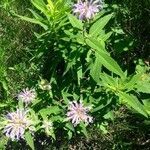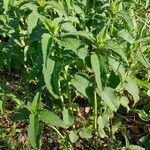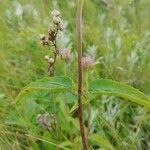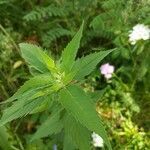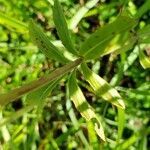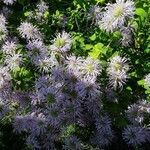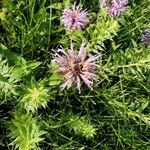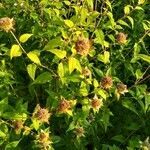Plants annual. Stems reddish or ± purple-red spotted, branched apically, densely retrorse white pubescent, nodes glabrous or villous. Petiole 2-15 mm; leaf blade lanceolate-ovate to ovate, ca. 8 cm × 3 mm, base rounded to subtruncate, margin unequally serrate, apex acuminate. Verticillasters in terminal capitula to 5 cm in diam.; floral leaves leaflike, reduced, densely pubescent, glandular, short petiolate or subsessile, margin entire; bracteoles linear, ca. 1 cm, curved upward, pilose, glandular. Pedicel ca. 1 mm, puberulent. Calyx tubular, narrow, 7-9 mm, pubescent, brown glandular outside, white bearded at throat inside; teeth subulate, equal, ca. 1 mm, apex spinescent. Corolla purple-red, 3-4 × as long as calyx, densely pubescent, glandular; upper lip slightly recurved inward, entire; lower lip ± patent. Nutlets obovoid, truncate. Fl. Jun-Jul.
An annual plant. The stems are reddish or can have purple-red spots. It branches near the tip. It has white hairs. The leaf stalk is 2-15 mm long. The leaf blade is sword shaped or oval and about 8 cm long by 3 mm wide. The base is rounded. The edges of the leaf have unequal teeth. The flower heads are 5 cm across. The flowers are purple-red.
